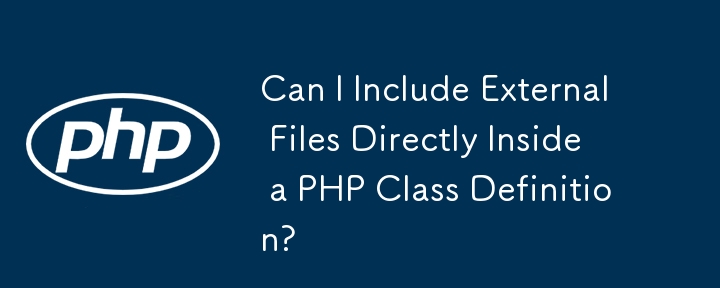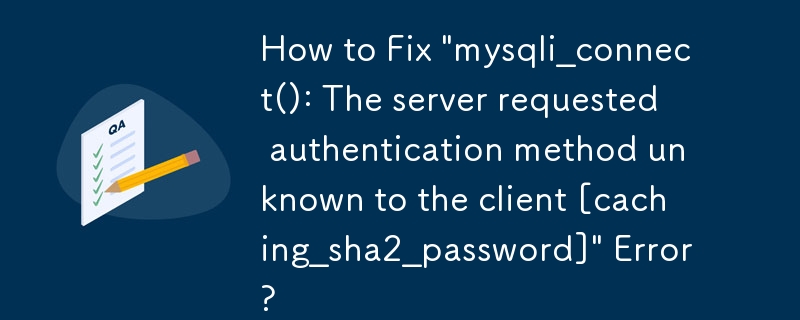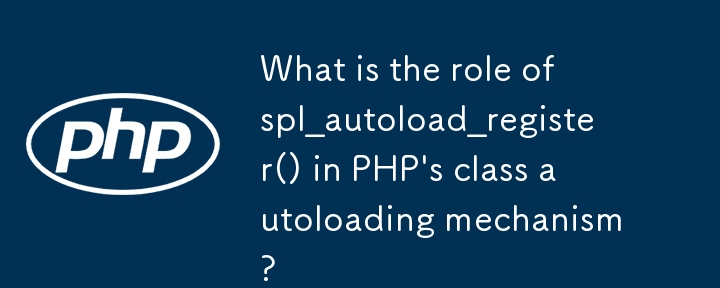Found a total of 10000 related content



Example of using Late Static Binding in PHP.
Article Introduction:Delayed static binding in PHP: flexible database queries
Lazy static binding (LSB) is a feature in PHP that allows a subclass to reference a static property or method of its parent class using the static keyword. This makes it possible to implement dynamic behavior in classes, which is especially useful in inheritance and subclass functionality customization. The core of delayed static binding lies in the use of the static keyword: when the PHP interpreter encounters the static attribute when compiling a function, it will delay determining its value until runtime. The value ultimately comes from the class that calls the function.
Application scenario: dynamic database query
Suppose you are developing a web application with a database. You have a Database base class that contains the methods for interacting with the database
2025-01-16
comment 0
822

How to Import a .sql File into MySQL Using PHP?
Article Introduction:How to Import a .sql File into MySQL Database Using PHP (Alternative Method)Importing a .sql file into a MySQL database using PHP can be a useful...
2024-12-18
comment 0
510

How to Integrate Excel Data Reading and Database Insertion Using PHPExcel?
Article Introduction:How to Integrate Excel Data Reading and Database Insertion Using PHPExcelIn this article, we will explore the integration of Excel data reading into a database using the PHPExcel library.Problem Description:The aim is to create a PHP application that
2024-10-19
comment 0
491








What are traits in PHP, and how do they address limitations of single inheritance?
Article Introduction:PHP supports single inheritance, but trait can reuse methods from multiple sources. Trait is a code block containing reusable methods and can be introduced into the class to avoid the problem of multiple inheritance. For example, after defining Loggertrait and being used by the User class, the User class can use the log method. Trait is not an independent class, has no attributes and does not have "is-a" relationship. The way trait solves the single inheritance limit is to allow a class to use multiple traits at the same time, such as DatabaseTrait and LoggerTrait, thereby combining functions. When multiple traits have the same name method, you can specify which method to use insteadof, or use as a method to alias the method to distinguish calls.
2025-06-13
comment 0
606



What is the role of spl_autoload_register() in PHP's class autoloading mechanism?
Article Introduction:spl_autoload_register() is a core function used in PHP to implement automatic class loading. It allows developers to define one or more callback functions. When a program tries to use undefined classes, PHP will automatically call these functions to load the corresponding class file. Its main function is to avoid manually introducing class files and improve code organization and maintainability. Use method is to define a function that receives the class name as a parameter, and register the function through spl_autoload_register(), such as functionmyAutoloader($class){require_once'classes/'.$class.'.php';}spl_
2025-06-09
comment 0
351

What is late static binding in PHP, and how does it differ from self::?
Article Introduction:In PHP, latestatic binding solves the limitations of self:: in inheritance through the static:: keyword. When using self::, it always points to the class that defines the method, not to call or inherit it; while static:: determines the target class at runtime, thus correctly referring to the subclass that is actually called. For example, if a method defined in the parent class is called by a subclass, self::class returns the parent class name, and static::class returns the child class name. 1. Use self:: to strictly refer to the current class definition; 2. Use static:: to support inheritance and allow subclass rewriting behavior; 3. Common application scenarios include factory mode
2025-06-17
comment 0
451

What is the use of the << operator in PHP?
Article Introduction:In PHP, implementing polymorphism can be achieved through method rewriting, interfaces, and type prompts. 1) Method rewriting: Subclasses override parent class methods and perform different behaviors according to object type. 2) Interface: The class implements multiple interfaces to realize polymorphism. 3) Type prompt: Ensure that the function parameters are specific to the type and achieve polymorphism.
2025-05-20
comment 0
1095


















